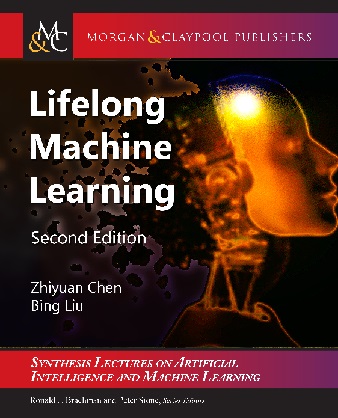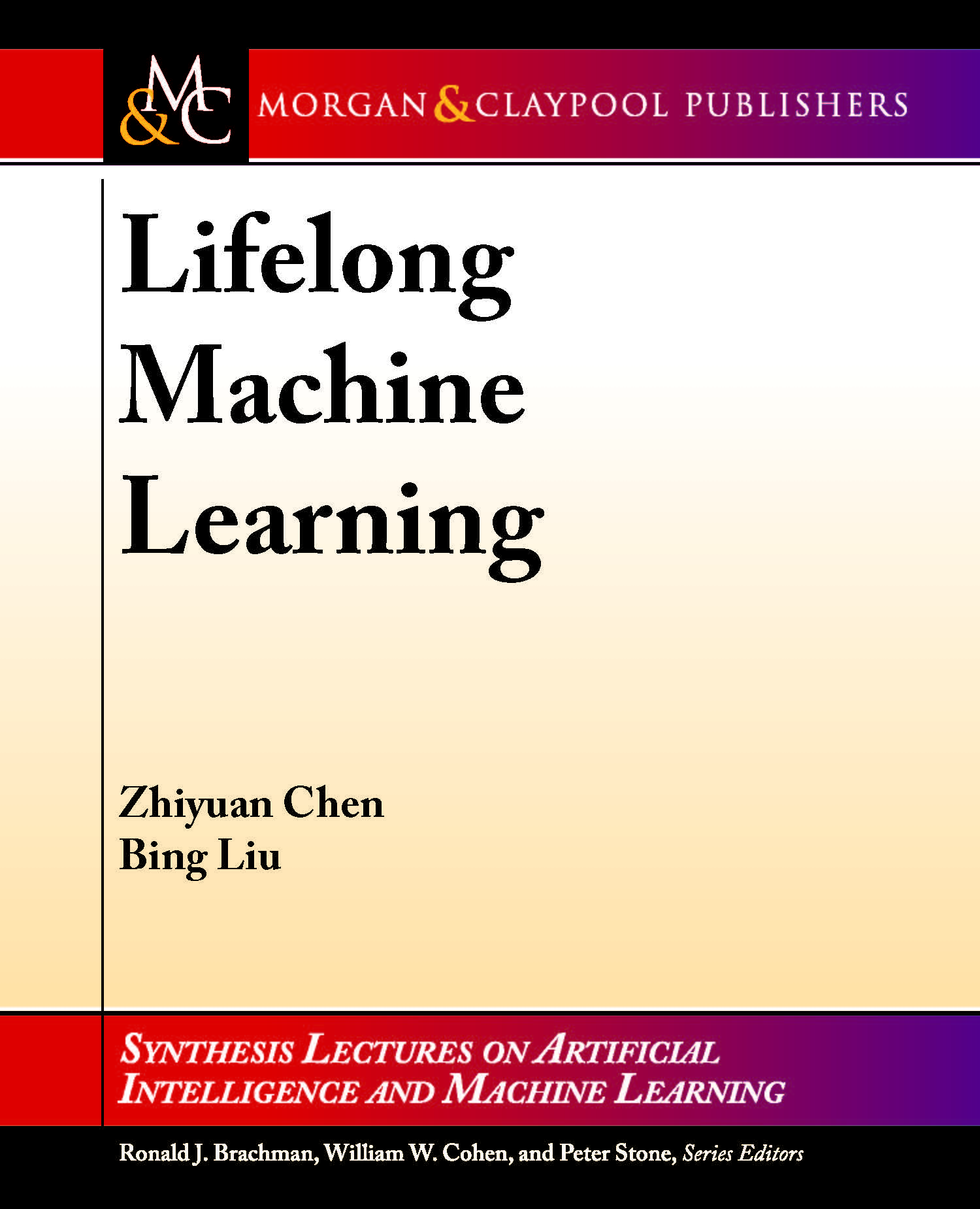 2nd edition
2nd edition
The First Book
dedicated to
the topic


Lifelong Machine Learning
Zhiyuan Chen and Bing Liu
Second Edition - Table of Contents
An Interview in Nature Outlook, July 20, 2022.
Liu's research page on Lifelong and Continual Learning.
Synthesis Lectures on Artificial Intelligence and Machine Learning, Morgan & Claypool Publishers, August, 2018
Lifelong Machine Learning or Lifelong Learning (LL) is an advanced machine learning (ML) paradigm that learns continuously, accumulates the knowledge learned in the past, and uses/adapts it to help future learning and problem solving. In the process, the learner becomes more and more knowledgeable and better and better at learning. This continuous learning ability is one of the hallmarks of human intelligence. However, the current dominant ML paradigm learns in isolation: given a training dataset, it runs a ML algorithm only on the dataset to produce a model. It makes no attempt to retain the learned knowledge and use it in subsequent learning. Although this isolated ML paradigm, primarily based on data-driven optimization, has been very successful, it requires a large number of training examples, and is only suitable for well-defined and narrow tasks in closed environments. In contrast, we humans learn effectively with a few examples and in the dynamic and open world or environment in a self-supervised manner because our learning is also very much knowledge-driven: the knowledge learned in the past helps us learn new things with little data or effort and adapt to new/unseen situations. This self-suprevised (or self-aware) learning also enables us to learn on the job in the interaction with others and with the real-world environment with no external supervision. LL aims to achieve all these capabilities. Applications such as chatbots, s elf-driving cars, or any AI systems that interact with humans/physical environments are calling for these capabilities because they need to cope with their dynamic and open environments which leave them with no choice but to continuously learn new things in order to function well. Without the LL ability, an AI system cannot be considered truly intelligent, i.e., LL is necessary for intelligence or AGI (artificial general intelligence). (See our work in my Lifelong Learning research page).
Main changes to the first edition
- Expanded the definition/scope of lifelong learning (LL) in Chapter 1 Introduction. LL is characterized by 1) continuous learning process, 2) knowledge accumulation, 3) use/adapt past knowledge to help new learning, 4) learning in the open world, and 5) learning on the job.
- Added three new chapters: Chapter 4 Continual Learning and Catastrophic Forgetting, Chapter 5 Open-world Learning, Chapter 8 Continuous Knowledge Learning in Chatbots
- Introduced the concept of learning on the job or learning while working.
- Updated and/or reorganized the rest of the chapters.
Teaching and Learning: This book is suitable for students, researchers, and practitioners interested in machine learning, data mining, and natural language processing. Lecturers can use the book in class. Some resources can be found in my Lifelong Learning research page.
Get the second edition
|
207 Pages, August 2018. Paperback: ISBN 9781681733029 eBook: ISBN 9781681733036 |
Get the first edition
|
145 Pages, November 2016. Paperback: ISBN 9781627055017 eBook: ISBN 9781627058773 |